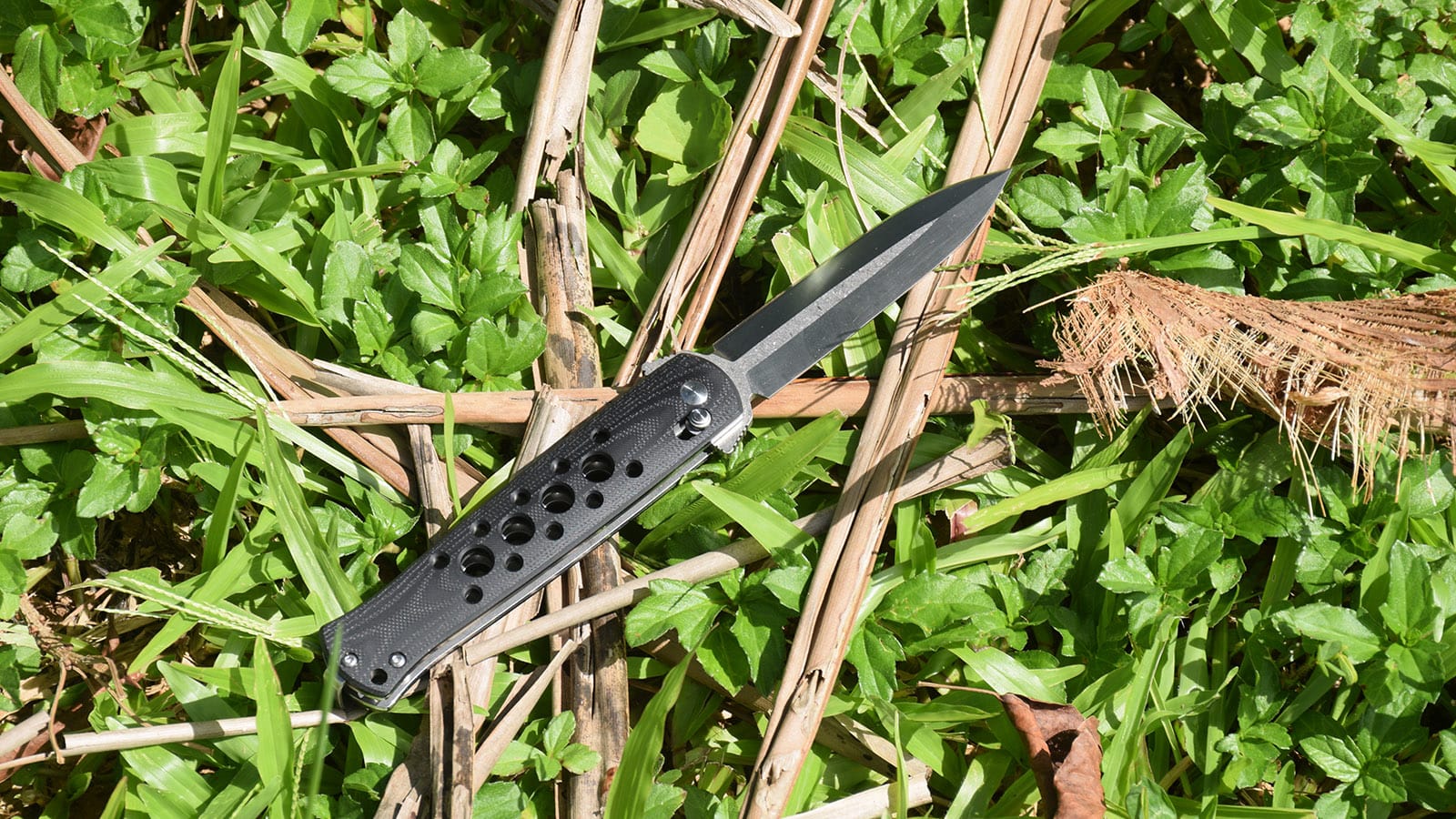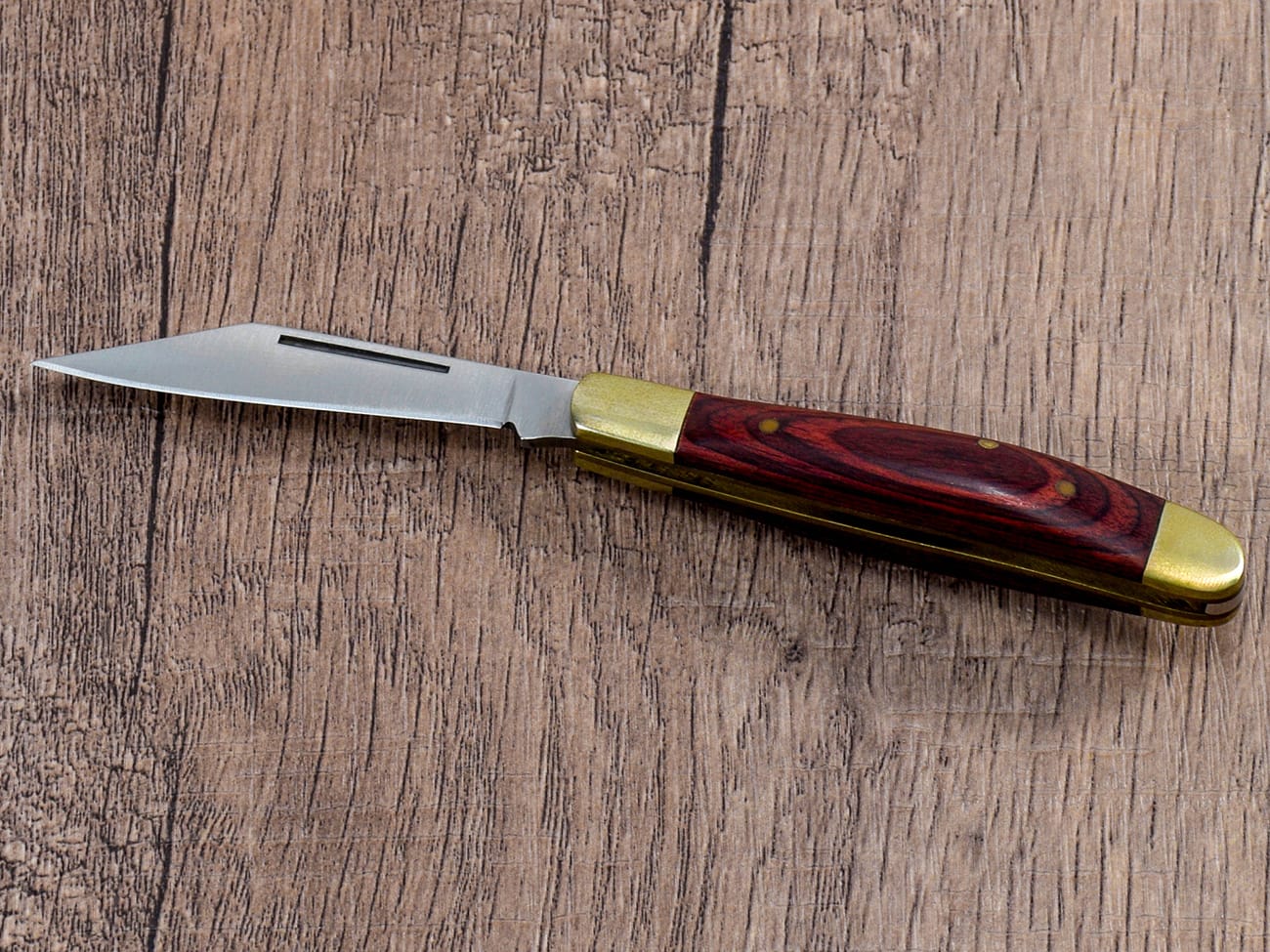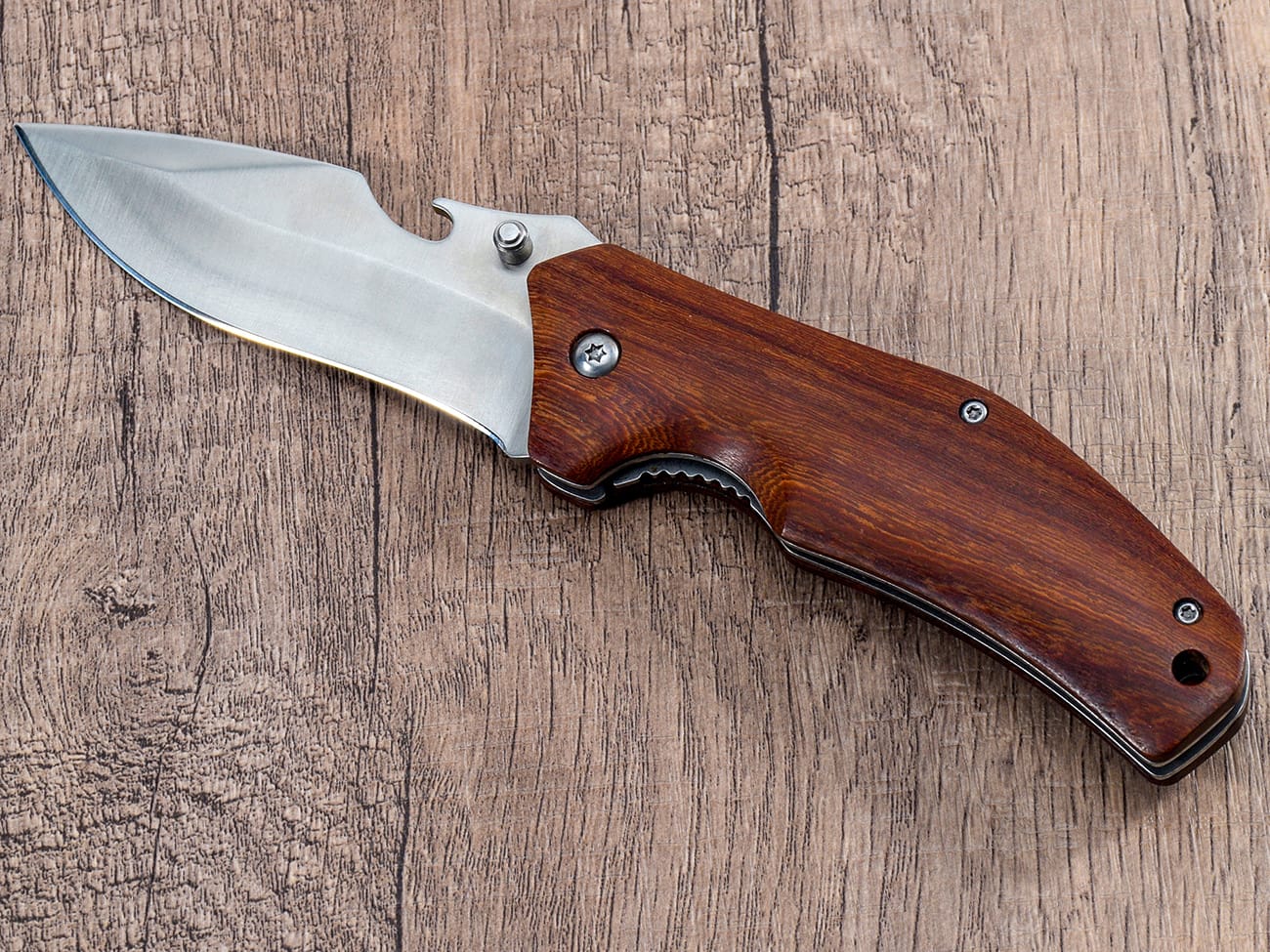Elegir el cuchillo de supervivencia adecuado puede marcar la diferencia entre la vida y la muerte en una emergencia en la naturaleza. Tanto si eres un experto en actividades al aire libre como si eres un novato en la preparación, esta guía completa te proporcionará los conocimientos necesarios para seleccionar el cuchillo de supervivencia perfecto para tus necesidades. Analizaremos factores cruciales como los materiales de la hoja, el diseño del mango y las características esenciales que diferencian un buen cuchillo de supervivencia de uno excelente. Al final de este artículo, tendrás confianza en tu capacidad para elegir una herramienta de supervivencia fiable y versátil que podría salvarte la vida cuando más importa.
Por qué es importante la elección del cuchillo de supervivencia
Un cuchillo de supervivencia es una de las herramientas más importantes que puedes tener en una situación de emergencia. Se puede utilizar para todo, desde construir un refugio y preparar comida hasta defensa personal y primeros auxilios. El cuchillo adecuado puede hacer que la supervivencia en la naturaleza sea mucho más fácil, mientras que la elección incorrecta puede dejarte luchando con una herramienta que no se adapta a tus necesidades. Analicemos los factores clave que debes tener en cuenta al elegir el cuchillo de supervivencia perfecto.
¿Qué hace que un cuchillo de supervivencia sea bueno?
- Espiga completa o espiga parcial: ¿cuál es mejor para sobrevivir?
Cuando se trata de cuchillos de supervivencia, la espiga (la parte de la hoja que se extiende hasta el mango) es crucial para la durabilidad y la resistencia. Un cuchillo de espiga completa se extiende a lo largo de todo el mango., que proporciona máxima estabilidad y potencia para tareas difíciles. Los cuchillos de espiga parcial, en los que la hoja solo se extiende parcialmente hacia el mango, generalmente son menos duraderos y más propensos a romperse bajo tensión. Para una situación de supervivencia, un cuchillo de espiga completa es casi siempre la mejor opción. Puede soportar los rigores del uso intensivo, como cortar leña o hacer bastoncillos (partir madera martillando el cuchillo a través de ella). Si bien los cuchillos de espiga parcial pueden ser más livianos, la desventaja en cuanto a durabilidad no vale la pena para una verdadera herramienta de supervivencia.
- Hoja fija o plegable: ¿cuál es más confiable?
El debate entre navajas de hoja fija y navajas plegables es algo habitual entre los expertos en supervivencia. A continuación, se ofrece un breve resumen:
- Cuchillos de hoja fija:
- Más duradero y confiable
- Mejor para tareas pesadas
- Sin partes móviles que se puedan romper
- Generalmente más fuerte en general
- Navajas plegables:
- Más compacto y portátil
- Más fácil de llevar en situaciones cotidianas.
- Puede tener varias cuchillas o herramientas.
Por pura cuestión de supervivencia, un Un cuchillo de hoja fija generalmente se considera más confiable que un cuchillo plegable.La falta de piezas móviles significa que hay menos cosas que pueden salir mal en una situación crítica. Sin embargo, una navaja plegable de alta calidad puede ser una herramienta valiosa, especialmente si la portabilidad es una preocupación importante.
- ¿Cuál es la longitud ideal de la hoja de un cuchillo de supervivencia?
La longitud de hoja "perfecta" para un cuchillo de supervivencia es un tema de debate, pero la mayoría de los expertos coinciden en que una hoja de entre 4 y 6 pulgadas es ideal. Este rango de tamaño ofrece un buen equilibrio entre versatilidad y control. Es lo suficientemente larga para realizar tareas más grandes, como cortar ramas pequeñas, pero lo suficientemente corta para trabajos precisos, como tallar o desollar animales. Las hojas más cortas (de menos de 4 pulgadas) pueden ser excelentes para trabajos detallados, pero pueden resultar difíciles para tareas más pesadas. Las hojas más largas (de más de 6 pulgadas) pueden ser potentes para cortar, pero pueden resultar difíciles de manejar para un control preciso. Recuerde, el mejor cuchillo de supervivencia es uno que pueda usar de manera cómoda y segura en una variedad de situaciones.
- Forma de la hoja: ¿punta caída, punta recortada o algo más?
La forma de la hoja de su cuchillo afecta su funcionalidad y versatilidad. Algunas formas de hoja comunes para cuchillos de supervivencia incluyen:
- Punta de caída: forma resistente y multiuso con una punta fuerte. Ideal para uso general y durabilidad.
- Punta de clip: ofrece una punta afilada y penetrante. Es buena para trabajos detallados, pero potencialmente menos duradera que una punta de caída.
- Tanto: tiene una punta fuerte para perforar. Es excelente para usos tácticos, pero puede ser menos versátil para tareas generales de supervivencia.
- Punta de lanza: Simétrica y fuerte, buena para empujar pero puede ser menos útil para tareas de corte.
Para un cuchillo de supervivencia de uso general, se suele recomendar una hoja de punta caída, ya que ofrece un buen equilibrio entre resistencia, versatilidad y facilidad de uso.
- ¿Qué materiales de hoja son mejores para los cuchillos de supervivencia?
El material de la hoja de su cuchillo afecta en gran medida su rendimiento, durabilidad y necesidades de mantenimiento. Las opciones más comunes incluyen:
- Acero carbono:Mantiene bien el filo y es fácil de afilar, pero es propenso a oxidarse.
- Acero inoxidable:Resistente a la corrosión, pero puede que no mantenga el filo tan bien como el acero al carbono.
- Acero inoxidable con alto contenido de carbono: intenta combinar las mejores propiedades tanto del acero al carbono como del acero inoxidable.
- Aceros para herramientas (como D2): muy duros y resistentes al desgaste, pero pueden ser difíciles de afilar en el campo.
Para un cuchillo de supervivencia, un acero inoxidable con alto contenido de carbono suele ofrecer un buen equilibrio entre retención del filo, resistencia a la corrosión y facilidad de mantenimiento. Sin embargo, el “mejor” material depende de sus necesidades y del entorno específicos.
- ¿Qué importancia tiene el material del mango del cuchillo?
Si bien la hoja suele ser la que recibe más atención, el mango de su cuchillo de supervivencia es igualmente importante. Afecta el agarre, la comodidad y la durabilidad general. Los materiales comunes del mango incluyen:
- G10: un laminado ligero y duradero a base de fibra de vidrio. Ofrece un agarre excelente incluso cuando está mojado.
- Micarta: Fabricada a partir de capas de tela o papel empapadas en resina. Duradera y con buen agarre.
- Madera: Tradicional y atractiva, pero puede ser menos duradera en condiciones extremas.
- Goma: ofrece un excelente agarre pero puede degradarse con el tiempo.
- Metal: Extremadamente duradero pero puede ser resbaladizo e incómodo en temperaturas extremas.
Para un cuchillo de supervivencia, se suelen preferir materiales como el G10 o la micarta por su durabilidad y agarre en diversas condiciones. Sin embargo, las versiones de alta calidad de cualquiera de estos materiales pueden funcionar bien.
- ¿Qué características adicionales debe tener un cuchillo de supervivencia?
Si bien un cuchillo simple y bien hecho puede realizar la mayoría de las tareas de supervivencia, algunas características adicionales pueden resultar útiles:
- Orificio para cordón: le permite sujetar el cuchillo a su muñeca o equipo para mayor seguridad.
- Pomo o base de golpeo: Se puede utilizar un extremo sólido del mango para martillar.
- Funda: Una buena funda protege la hoja y permite un transporte seguro y cómodo.
- Integración de iniciador de fuego: algunos cuchillos incluyen una varilla de ferrocerio en el mango o la funda.
- Sección dentada: puede ser útil para cortar materiales duros.
Recuerde que las características adicionales pueden agregar versatilidad, pero también complejidad. Priorice un cuchillo básico sólido y bien hecho en lugar de uno con muchas funciones.
- ¿Cuánto debería gastar en un cuchillo de supervivencia?
El rango de precios de los cuchillos de supervivencia es amplio, desde opciones económicas de menos de $50 hasta cuchillos personalizados de alta gama que cuestan cientos o incluso miles de dólares. Si bien no es necesario gastar una fortuna, vale la pena invertir en un cuchillo de calidad en el que pueda confiar en situaciones de emergencia. Una buena regla general es calcular un presupuesto de entre $100 y $300 para un cuchillo de supervivencia de alta calidad de un fabricante de buena reputación. Esta gama generalmente ofrece materiales y una artesanía excelentes sin entrar en el ámbito de los rendimientos decrecientes. Recuerde, el cuchillo más caro no es necesariamente el mejor para sus necesidades. Concéntrese en encontrar un cuchillo que cumpla con sus requisitos de durabilidad, funcionalidad y comodidad dentro de su presupuesto.
- ¿Cómo se mantiene y cuida un cuchillo de supervivencia?
El mantenimiento adecuado es fundamental para garantizar que su cuchillo de supervivencia esté siempre listo cuando lo necesite. A continuación, se ofrecen algunos consejos clave para su cuidado:
- Mantenlo limpio: limpia la cuchilla después de usarla, especialmente si ha estado en contacto con materiales corrosivos.
- Mantenlo seco: la humedad es el enemigo de la mayoría de los materiales de los cuchillos. Seca bien el cuchillo después de usarlo o de exponerlo al agua.
- Manténgalo afilado: un cuchillo sin filo es peligroso e ineficaz. Aprenda a afilar su cuchillo correctamente o haga que un profesional lo afile con regularidad.
- Engrase la hoja: para las hojas de acero al carbono, una capa ligera de aceite puede evitar la oxidación.
- Compruebe si hay piezas sueltas: inspeccione periódicamente su cuchillo para detectar tornillos o piezas sueltas, especialmente en los cuchillos plegables.
- Guárdelo adecuadamente: use la funda o una solución de almacenamiento de cuchillos para proteger la hoja cuando no esté en uso.
Con el cuidado adecuado, un buen cuchillo de supervivencia puede durar muchos años y brindar un servicio confiable cuando más lo necesita.
- ¿Dónde puedo encontrar reseñas e información confiables sobre cuchillos de supervivencia?
Al investigar sobre cuchillos de supervivencia, es importante consultar una variedad de fuentes:
- Foros de supervivencia y actividades al aire libre: lugares donde los amantes de la naturaleza comparten sus experiencias y recomendaciones.
- Sitios web para entusiastas de cuchillos: a menudo ofrecen reseñas y comparaciones detalladas.
- Instructores y expertos en supervivencia: muchos publican recomendaciones de equipos basadas en experiencias del mundo real.
- Minoristas de cuchillos con buena reputación: suelen tener descripciones detalladas de productos y reseñas de clientes.
- Reseñas de YouTube: pueden proporcionar demostraciones visuales del rendimiento del cuchillo.
Recuerde tener en cuenta varias opiniones y fuentes, ya que las preferencias individuales pueden variar mucho. Lo que funciona perfectamente para una persona puede no ser ideal para otra.

Un cuchillo de caza hecho a medida de acero 8cr13mov con mango de madera de olivo: un ejemplo de un robusto cuchillo de supervivencia
Conclusión: Cómo elegir el cuchillo de supervivencia perfecto
Elegir el cuchillo de supervivencia adecuado es una decisión personal que depende de sus necesidades específicas, su entorno y sus preferencias. Estos son los puntos clave que debe recordar:
- Elija un cuchillo de hoja fija y espiga completa para una máxima durabilidad y confiabilidad.
- Busque una longitud de hoja entre 4 y 6 pulgadas para mayor versatilidad.
- Considere una forma de hoja con punta caída para una utilidad versátil.
- El acero inoxidable con alto contenido de carbono a menudo proporciona un buen equilibrio de propiedades para el uso de supervivencia.
- Priorice un material de mango cómodo y duradero como G10 o Micarta.
- Invierte en calidad, pero recuerda que el cuchillo más caro no siempre es el mejor para tus necesidades.
- Mantenga su cuchillo en buen estado para garantizar que siempre esté listo cuando lo necesite.
Recuerda que el mejor cuchillo de supervivencia es aquel que te resulte cómodo de usar y que tendrás contigo cuando lo necesites. Tómate el tiempo de investigar, maneja distintos cuchillos si es posible y elige una herramienta en la que puedas confiar en cualquier situación. Tu cuchillo de supervivencia perfecto podría marcar la diferencia a la hora de enfrentar los desafíos de la naturaleza.




